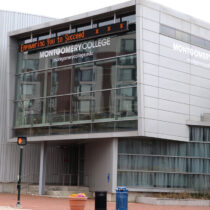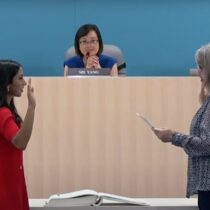
Montgomery County Public Schools (MCPS) data reveals that students are more chronically absent this school year than before COVID-19 pandemic shutdowns. However, the first quarter of the 2023-24 school year saw a decrease in absenteeism from the previous year.
In the 2018-19 school year, 19.5% of students were chronically absent. In the 2022-23 school year, that percent increased to 26.2% of students. So far, in the 2023-24 school year 21.4% of students are chronically absent.
Students are “chronically absent” if they miss 10% or more of school days per year, regardless of the reason. This is equal to around 18 days every school year, or around two days per month. Truant students are absent or unexcused and miss 20% or more of the school year, according to an MCPS presentation.
Why are students chronically absent?
The pandemic is one reason for the rise in absenteeism, according to a Monday Public Safety and Education & Culture Montgomery County Council Committee presentation.
Chronic absenteeism doubled in the U.S. during the COVID-19 pandemic, according to The White House.
“We are not alone at MCPS in combatting this,” Associate Superintendent Damon Monteleone said during the presentation.
There has been a culture shift due to the pandemic where families and older students devalue the need to be present in-person at school, Monteleone said. Other reasons for this chronic absenteeism mentioned at the meeting include the ongoing youth mental health crisis and that many students, especially students of color, feel that they don’t belong in their school environment.
Monteleone also said the county has an antiquated, or old-fashioned, school system that has not significantly changed over the past 100 years and likely doesn’t cater to modern students. A possible solution, Monteleone suggested, is to add more interactive aspects to school such as internship or work programs programs.
“Let’s lean into technology, let’s lean into flexibility,” Monteleone said. “Let’s think about how we can evolve to meet students where society is today”.
Lastly, Monteleone said that some students are making a business decision when deciding if they should come to school. These students have to choose between attending school and working a part time job or taking care of siblings.
Chronic absenteeism rates are highest among Hispanic students, a group with a 31.5% chronic absenteeism rate this school year. Emergent multilingual learner students also have higher rates of absenteeism at over 29%.
High schoolers also have higher rates of absenteeism than other grade levels, with 29.24% rate, over a 10 percentage points higher than middle schoolers.
What is MCPS doing to fix absenteeism?
The school district’s goal is to decrease absenteeism for the 2023-24 school year by five percentage points from the 2022-23 school year. Currently, they’re .02% away from meeting that goal with first quarter numbers. Whether that pattern continues through winter and spring is yet to be determined.
The school district is attempting a multi-pronged approach to fix the attendance problem. The Attendance Action Plan, and the accompanying “All Together Now” campaign focus on lowering barriers to school attendance and fostering an inclusive learning environment for all students.
One focus is on active outreach to parents and students when a student begins to display chronic absenteeism. This can be through social workers, administrators and other school staff to get an understanding of why a student is not showing up to school and to help lift any barriers.
Schools in the district are encouraged to look into the antiracist system audit to figure out how to improve the school and system culture, have regular meetings about attendance statistics and develop attendance accountability structures.
MCPS representatives said there is no one way to completely solve the absentee issue.
“There are so many factors we can’t control,” Steve Neff, the Director of Pupil Personnel and Attendance Services said. “There is not a simple or a one-time fix.”


Comments are closed.